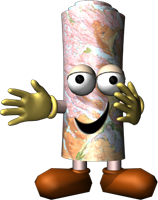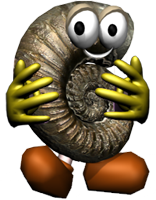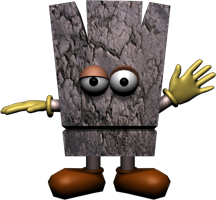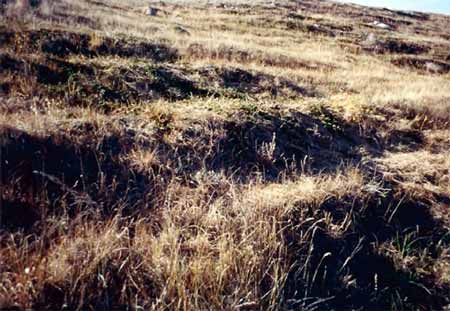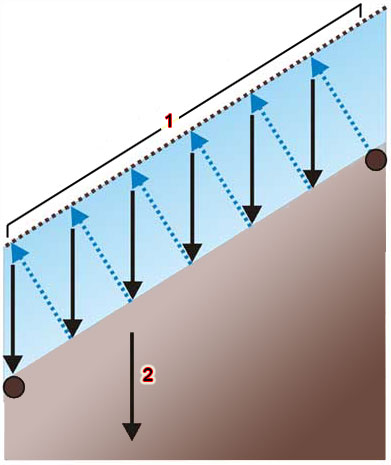Creep
Creep is a very slow mass movement that goes on for years or even centuries. You can't see creep happening but leaning fences and poles and broken retaining walls show where it has taken place.
When sediment  expands, individual particles are lifted up at right angles to the slope. Sediments can expand when they freeze, get wet or are heated up in the sun. When the sediments shrink, the particles fall straight back down. Creep takes a long time because each particle might only move a millimetre to a few centimetres at a time.
expands, individual particles are lifted up at right angles to the slope. Sediments can expand when they freeze, get wet or are heated up in the sun. When the sediments shrink, the particles fall straight back down. Creep takes a long time because each particle might only move a millimetre to a few centimetres at a time.
Click to view larger and see the legend.
This diagram shows how a single particle gradually moves down the slope. It moves a little further with each cycle of swelling (blue arrow) and shrinking (black arrow).
- Expanded ground surface
- Gravity
« Back 


